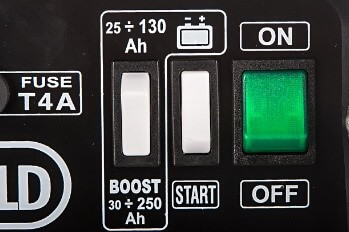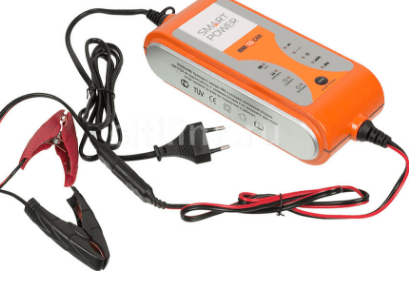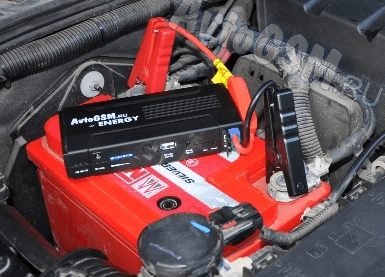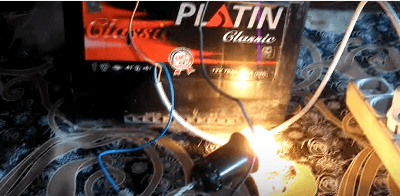How to charge car battery charger
A car battery can be discharged at the most inopportune moment, in this case, the car cannot run from the starter.
There are several ways to make a car with a batch battery (AKB), but the most secure and reliable of them - recharging using a special device. How to charge the battery of the car by the charger, why there is a discharge, which there are still ways to revive the battery - we will consider all these issues in this article.
Why the battery sits down
Often, motorists face a problem - the engine is trying in the morning, and the starter is barely twisted, or no movements do not occur at all, since the battery completely sat down. The reasons for the inoperability of AKB several:
- at the time of parking, energy consumers were left on (dimensions, radio tapes, etc.), which contributed to the discharge of the battery;
- there is a leakage in the electrical circuit - with fully disconnected consumers, electricity consumption still goes;
- the battery has exhausted its resource, it is old, the plates in the banks of the battery began to crumble;
- insufficient charging gives the generator, it does not produce the necessary current.
If the battery has worked out its resource, it needs to be replaced, but while the new battery is not purchased, you still need to run the motor, here to help and comes the charger. The charger needs a car owner anyway, and each self-respecting motorist has a similar device in stock. 
All chargers manufactured by industry are powered by a 220 volt household network, they lower the voltage up to 12 volts, which is necessary to recharge the car battery. There are charging and charging and starting devices, they differ among themselves by power and its destination.
Chargers (memory) serve only for charging the battery, they do not have any other purpose. Using the charging and starting device (s), you can run the motor with a fully discharged battery, the power of such a "charger" is enough to scroll through the starter.
When choosing a memory, it should be remembered that the device industry is available, calculated on different voltages - 6/12/24/48 Volt. More "chargers" can be different in design - impulse and transformer. Transformer memory in our time is already found rarely, and although they are more reliable, they themselves are quite cumbersome. There is another type of charging - on solar panels, these devices do not need to be included in the power grid, they feed from sunlight. The minus of such structures is their high cost.
The CPU is characterized by high power, they mainly work from alternating voltage of two hundred and twenty volts. But also there are "Charger" models with built-in batteries, a significant minus of such devices - they themselves have to be periodically recharged. The high power of the PC allows you to scroll the engine starter, even at minus temperatures, so that the overload circuit does not burn, it is equipped with special protection. In some schemes of modern charge instruments, the Boost mode is provided, with which the rapid recharging of the AKB is ensured. But it should be resorted to such a regime only in case of extreme necessity, with a large charging current, the battery quickly fails. 
There are various stamps of the memory, the market presents a wide range of Russian and foreign production goods. Charging devices "Orion" are fairly popular, the company's products are presented in a wide range. The price of the memory can be very significantly different, it depends on the power of the device and its functionality. Among the most famous manufacturers of car "charges" should be noted:
- DHC (Taiwan);
- Bosch;
- Intertool;
- BERKUT SMART POWER (China);
- "Sorokin" (Russia).
Orion PW700, Bosch C3, Berkut Smart Power SP-8N, Berkut Smart Power SP-8N, are most popular for users, the last apparatus of the listed is honored in many ratings of automotive "chargers." 
The car battery can be recharged directly on the car, for this it is necessary to install the supply wires of the UKB terminals. The power on the on-board network of the machine is better to turn off, removing the minus or the plus wire - the battery charges so faster. When connecting the wires to the battery, it is important not to confuse polarity:
- the positive wire of the "charger" connect to the plus on the battery;
- the minus wire of the charger connects the battery with the terminal "minus".
You can also remove the battery from the car and charge it anywhere where there is a voltage of 220 volts, for example, at home. There is an ammeter to control charging, almost all devices are equipped with a current regulator. Before charging the battery, it is necessary:
- clear the battery case about dirt and dust, including in the area of \u200b\u200bthe corks of battery cans - the hindrance in the electrolyte is extremely undesirable;
- inspect the battery - there is no leakage of electrolyte, cracks in the housing;
- unscrew all traffic jams (if provided);
- check the level of electrolyte in banks, if necessary, make topping.
From the magnitude of the charging current supplied to the battery depends, how much will be able to quickly charge the battery. For example, you can install a charging current of only 0.6 amps, but in this case the restoration of the operation of the battery will have to wait long. You can also serve a larger starting current (5-6 amps), then the battery charges quickly, but this method has its big minus - the battery will drop. It is more expedient to immediately apply a larger current, and as the battery restores it to gradually reduce it.
It is not necessary to charge the battery with a battery, you can half or even a quarter. It should also be borne in mind that the maximum charging current should not exceed ten percent of the total battery capacity, let's say if the battery is 55-ampere, then it is no longer necessary to charge it with a current of 6 amps. 
Run the engine with a seed battery can be in different ways:
- from the pusher;
- with the help of a tug;
- by means of "cigarette" from another battery.
But there are "folk" ways to recharge, and in some situations they will be outlined. One of their self-made packages consists of the following elements:
- household electric pipe with fork for network 220 volts;
- diode;
- an ordinary household electric bottle by 60 watts;
- electric wires.
"Zero" is supplied directly, and the phase passes through a diode and light bulb. The diode should be installed by the anode to the lamp, the cathode - to the charging battery. The diode performs the function of the rectifier - it "cuts" the sinusoid and skips only plus to the battery. 
When you turn on the circuit in the network 220 V, charging starts to go, the light bulb is lit into the heat. If the voltage on the site between the diode and the light bulb, the voltmeter should show a little less than half of the value that is available in the power grid (95-100 volts). At the same battery, the voltage drops, and the voltmeter shows approximately 12.6 V.
With this scheme, the charging current is approximately 1.3 amps, and this means for 10 hours of recharging the battery will receive 13 amps. If the lamp power is increased to 100 watts, the charging current will also increase, approximately 2 A. When changing the power of the light bulb (the thickness of the incandescent thread), you can adjust the charging current. 
But with such a scheme, it should be borne in mind that if the diode is weak, it may not withstand the forces of the current and burn.
If there is no charger, and the battery must be returned to life, this method can be used, but should be careful because you have to work with a sufficiently high voltage. There is no galvanic junction in the chain of the collected scheme, so it is forbidden to touch the wires or battery terminals.
If not available, you can charge the battery using a laptop. To do this, you will need:
- multimeter;
- wires;
- power supply from a laptop;
- tool for stripping wires (scissors, knife);
- lamp 12 V with a cartridge (suitable from the front headlight of the car).
Pray from the outlet laptop usually has a voltage of about 20 volts, charging current - in the 4 A.
Configure the scheme as follows:

To revive a thoroughly batch, you will need to charge it in such a way about 6-9 hours. With the help of a more powerful automotive lamp, the battery is restored faster, but completely without a light bulb, it is impossible to connect the wires - the power supply can be burned.
- Before charging the battery, it is necessary to check the electrolyte level in banks, if necessary, add distilled water.
- The maximum charge current in no case should exceed 10% of the entire capacity of the battery, better if this indicator is no more than 5%.
- On many modern "chargers" there is a Boost regime, but they are better not to use - with a quick charge, sulfate occurs in the banks of the battery, and the acb is ahead of time fail.










